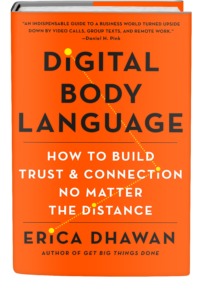Modern communication is a far cry from what we experienced even 10 years ago. As my guest, Dr. Deborah Tannen has noted, we’ve gone from a default state of consciousness that was one of solitude, to a default state of consciousness that is one of always-on engagement. Dr. Tannen is doing important work, of which every leader should take note. As communication methods and styles change it’s important to realize that the effectiveness of our leadership will largely depend on how effectively we leaders are able to navigate the new styles and ways of communication. Join me in this conversation with Dr. Tannen to hear how modern communication is working and not working in the 21st century.
[Tweet “.@Tannen_Deborah on modern #communication challenges in #work and life. Join us for this fascinating conversation on #MastersOfLeadership. ##GettingBigThingsDone”]What conclusions are people making about you by the things you’re saying and the way you’re saying them?
Communication has never been a simple matter of stating what you mean, having the other person receive it as you mean it, and moving on in harmony. There are myriad places along the way that the simplest of communications can be misspoken, misunderstood, and misinterpreted. An important thing Dr. Tannen mentioned in our conversation is that people are not only listening to you in order to understand the information coming out of your mouth. They are also assessing you as an individual and making conclusions about you by the way you speak and the things you say. But you’re not doomed to the fickleness of other people’s perceptions. There are tangible things you can do to make yourself better understood and better perceived by others. Be sure you listen to this episode to hear Dr. Tannen’s tips.
FOMO and FOBLO impact the ways we communicate – and social media exacerbates the problem
Are you familiar with the terms Dr. Tannen has coined: “FOMO” and “FOBLO?” The acronyms stand for “Fear of missing out” and “Fear of being left out.” Both are elements of modern communication that have more to do with the things going on outside a conversation. In this interview, Dr. Tannen provides a handful of very practical examples of how our modern, digital communication makes the fear of being left out and the fear of missing out even worse for some individuals, and more importantly, gives suggestions for how we can better manage our own fears in these areas so that we can communicate more deeply and authentically.
[Tweet “#FOMO and #FOBLO impact the ways we #communicate – and #SocialMedia exacerbates these problems. @Tannen_Deborah explains on #MastersOfLeadership. ##GettingBigThingsDone”]The “double bind” women often find themselves in at the workplace
A prominent area where Dr. Tannen has spent a great deal of time is in regard to the particular communication needs, styles, and habits of women. She’s discovered that women in the workplace often find themselves in what she refers to as a “double bind.” A double bind is when two things are required of an individual and the successful accomplishment of one of them makes the other impossible. How does this happen to women in the workplace? Dr. Tannen explains with great insight on this episode, so be sure you listen.
The 2 dynamics that are happening in every conversation, digital or in person
In every conversation, whether it happens in-person or digitally, two things are almost always going on in the minds of those involved. These two things also weigh in at varying levels of importance depending on whether men or women are involved in the conversation. These two things are both questions: “Who is on top in the relationship?” and “How close are we?” Can you guess which of the two is more likely to be the consideration of women and which is more likely to be the consideration for men? On a more practical level, do you know how keeping those questions in mind can help you become a more effective communicator? Dr. Tannen’s work has given her many insights into modern communication issues like these, so be sure you listen to hear her share them.
[Tweet “The 2 dynamics that are happening in every #conversation, digital or in person. #Communication research bears it out, so hear @Tannen_Deborah explain on #MastersOfLeadership. ##GettingBigThingsDone”]Outline of This Episode
- [0:45] Who is Dr. Deborah Tannen?
- [1:49] Why Dr. Tannen was interested enough in the relationships of women to write a book about it
- [6:12] The unspoken scale women tend to put themselves on when judging the depth of their relationships
- [12:02] How the world of social media provokes anxiety in new ways
- [16:10] The way women in the workplace often find themselves in a “double bind”
- [21:21] How does dominance play out in a digital world?
- [25:19] Managing apologies, showing gratitude, and doing it in person and from a distance
- [28:57] Advice for those with bosses who have poor digital communication skills
- [33:05] The impact of disruption: perceptions and realities
- [37:15] Authenticity in communication is often motivated by concern for those listening
- [40:38] What’s next for Dr. Tannen and what new rules do we need to think about?
Resources & People Mentioned
- Dr. Tannen’s Website
- BOOK: You’re The Only One I Can Tell
- BOOK: You Just Don’t Understand
- BOOK: You’re Wearing That?
- BOOK: You Were Always Mom’s Favorite
- BOOK: Talking From 9 to 5
- The Subtext of Digital Conversations – an article in the Atlantic
Connect with Erica
Erica@cotentialgroup.com







